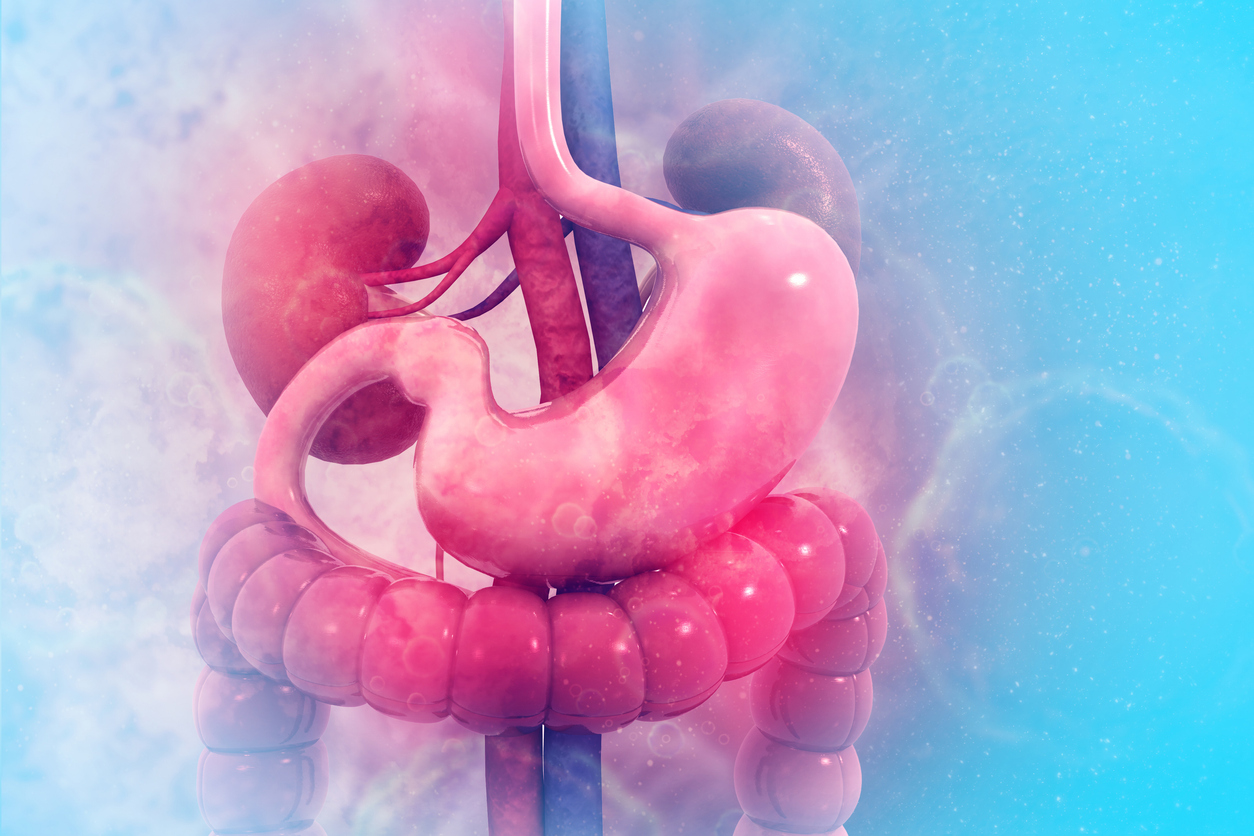When the balance of gut microbes is disturbed — a condition known as dysbiosis — it can lead to increased intestinal permeability, inflammation, and the production of harmful metabolites.
Published Jul 04, 2025 | 11:19 AM ⚊ Updated Jul 04, 2025 | 11:19 AM

Human digestive system. Representative image. (iStock).jpg
Synopsis: One of the most intriguing and lesser-known relationships is the one between the gut and the kidneys, especially in the context of diabetes. What makes this connection particularly troubling is that kidney disease can also alter the gut microbiome, creating a vicious cycle.
In recent years, the phrase “everything starts in the gut” has taken centre stage in health and wellness conversations — and for good reason. Our gut microbiome, a complex community of trillions of microorganisms, plays a key role in everything from immunity to mental health.
However, perhaps one of the most intriguing and lesser-known relationships is the one between the gut and the kidneys, especially in the context of diabetes.
Diabetes is the leading cause of chronic kidney disease (CKD) worldwide, but emerging research suggests that the progression of kidney damage in diabetes isn’t just about blood sugar and blood pressure. The health of your gut may be a missing piece of the puzzle.
The gut microbiome is composed of bacteria, fungi, viruses, and other microbes that live, mostly, in our intestines. These microbes help digest food, produce vitamins, regulate inflammation and maintain the integrity of the intestinal barrier.
When the balance of gut microbes is disturbed — a condition known as dysbiosis — it can lead to increased intestinal permeability (also called “leaky gut”), inflammation, and the production of harmful metabolites.
People with type 2 diabetes often show signs of gut dysbiosis. High blood sugar levels can alter the gut environment, reducing microbial diversity and allowing pro-inflammatory bacteria to flourish. This imbalance can have a ripple effect on the entire body, including the kidneys.
Here’s how:
1. Increased gut permeability: Dysbiosis can compromise the gut lining, allowing bacterial endotoxins (such as lipopolysaccharides, or LPS) to enter the bloodstream. This triggers systemic inflammation, a known contributor to insulin resistance and vascular damage, including in the kidneys.
2. Toxin overload and uremic toxins: Certain gut bacteria produce uremic toxins like indoxyl sulfate and p-cresyl sulfate. In a healthy person, the kidneys filter out these toxins. However, in people with diabetes or early-stage kidney disease, these compounds can accumulate and further damage kidney tissues, accelerating CKD progression.
3. Chronic inflammation: Dysbiosis drives low-grade chronic inflammation, which plays a central role in both the development of diabetic nephropathy and the worsening of existing kidney disease.
What makes this connection particularly troubling is that kidney disease can also alter the gut microbiome, creating a vicious cycle. As kidney function declines, waste products build up in the blood, altering the gut environment and further promoting dysbiosis.
This “gut-kidney axis” becomes a two-way street, where each organ’s dysfunction worsens the other’s.
Though research is still evolving, several promising strategies are being explored:
1. Probiotics and prebiotics: Studies suggest that supplementing with specific strains of beneficial bacteria may help reduce inflammation and lower levels of uremic toxins. Prebiotics (non-digestible fibres that feed good bacteria) may also improve gut health and metabolic markers in diabetes.
2. Dietary interventions: A high-fibre, plant-rich diet can support microbial diversity and reduce toxin production. Diets like the Mediterranean or DASH (Dietary Approaches to Stop Hypertension) diet are being studied for their gut and kidney benefits in diabetic patients.
3. Synbiotics and postbiotics: Combining probiotics and prebiotics (synbiotics) or using microbial byproducts (postbiotics) may offer targeted ways to influence the gut-kidney axis.
4. Faecal Microbiota Transplantation (FMT): Though still experimental, FMT — transferring healthy microbiota from a donor to a patient — has shown promise in restoring gut balance and improving metabolic health.
The connection between the gut and kidneys in diabetes isn’t just an academic curiosity — it has real clinical implications. As we understand the gut-kidney axis better, we may be able to develop new treatments for diabetic kidney disease that go beyond controlling blood sugar and blood pressure.
Personalised gut microbiome therapies could become a powerful tool in preventing or slowing the progression of kidney disease in diabetes — a development that would transform patient care.
The gut microbiome may be out of sight, but it shouldn’t be out of mind — especially for people living with diabetes. Taking care of your gut could be one of the most impactful steps you take to protect your kidneys.
As science continues to unravel this complex relationship, one thing is clear: Healing the gut may be key to healing the kidneys.
(Views are personal. Edited by Muhammed Fazil.)
